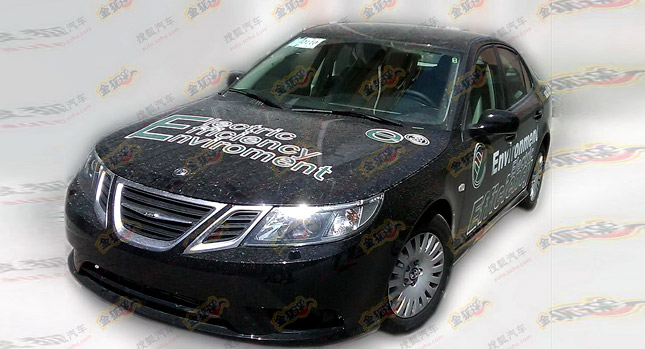We have been critical of the clones produced by Beijing Automotive Industry Holding Co. (BAIC for short) such as its Mercedes B-Class doppelganger called the BC301Z, but the Saab 9-3 sedan pictured above is actually legit.
You see, GM sold the intellectual rights for Saab’s older generation 9-5 and 9-3s along with select powertrain technology and tooling equipment to China’s BAIC for US$200 million back in 2009, when it still owned the Swedish carmaker.
 BAIC’s subsidiary Beijing Auto Works (BAW) had previewed its own versions of the Saab 9-3 and 9-5 sedans with two separate concepts called the C60 and C71 respectively, during the 2010 Beijing Auto Show.
BAIC’s subsidiary Beijing Auto Works (BAW) had previewed its own versions of the Saab 9-3 and 9-5 sedans with two separate concepts called the C60 and C71 respectively, during the 2010 Beijing Auto Show.
For its next move, BAIC is finishing work on a pure-electric model based on the Saab 9-3. Codenamed the Q60FB-C1, it will likely make its first public outing at the upcoming 2012 Beijing Auto Show in April.
With the exception of BAICs badging, the Q60FB-C1 is a mirror image of the original 9-3. However, under the hood it’s a different story as the Chinese automaker has fitted the premium sedan with an electric powertrain that was jointly developed with Japan’s Matsushita Group.
Initial reports claim that the Q60FB-C1’s battery can be recharged up to 80 percent in 6 to 8 hours, offering the sedan model a top speed of 160km/h (100mph) and a driving range of around 150 kilometers (~93 miles).
Story References: Pcauto & Sohu
PHOTO GALLERY




















